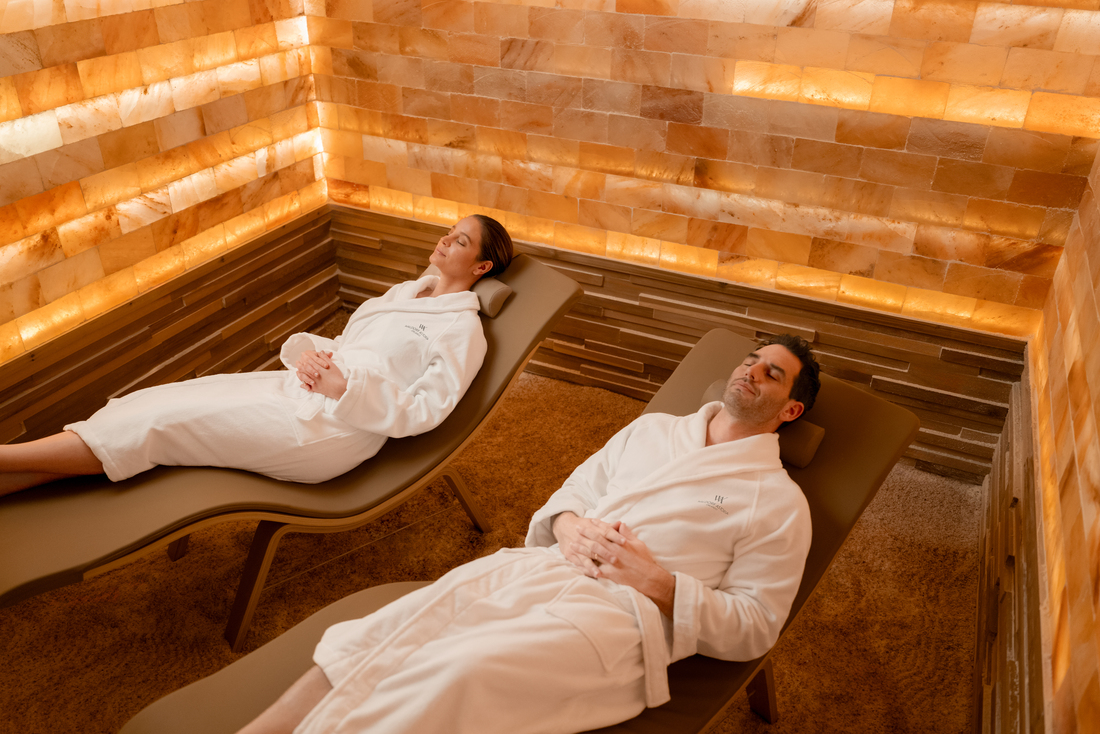
Discover the Rejuvenating World of Salt Spa Therapy
In the pursuit of wellness and relaxation, people are turning to nature for healing. Among the rising trends in natural therapy is salt spa treatment, also known as halotherapy. Salt spas offer a sanctuary where people can breathe in purified, mineral-rich salt air to improve respiratory health, skin conditions, and overall well-being. If you’re new to this concept, this comprehensive guide will walk you through everything you need to know about salt spas—their benefits, history, treatments, and why they’re becoming a must-try wellness experience.
Introduction to Salt Spas
A salt spa is a specialized wellness facility that uses Himalayan or Dead Sea salt to create a microclimate simulating natural salt caves. Clients relax in serene rooms where dry salt aerosol is dispersed into the air. This therapy, known as halotherapy, helps detoxify the lungs, skin, and sinuses while offering deep relaxation benefits.
Salt spas provide a tranquil ambiance with soft lighting, Himalayan salt walls, and calming music, making it an ideal destination for mental and physical renewal.
The History of Salt Therapy
The therapeutic use of salt dates back centuries. Ancient Greek physician Hippocrates promoted salt inhalation for respiratory issues. However, modern halotherapy emerged from Eastern Europe in the 19th century. Polish physician Dr. Feliks Boczkowski observed that salt mine workers rarely suffered from lung problems, which led to the creation of artificial salt rooms.
Today, salt spas recreate those natural salt environments using state-of-the-art halogenerators and imported mineral salts.
How Does a Salt Spa Work?
Salt spas function through a process called dry salt therapy. Here’s how it works:
The Halogenerator
At the heart of every salt spa is a halogenerator—a device that grinds pharmaceutical-grade salt into microscopic particles and disperses it into the air.
The Salt Room
These particles float in a temperature- and humidity-controlled room, which mimics a salt cave environment. Clients breathe in this salty air during 30–45 minute sessions.
Absorption
The salt particles enter the respiratory system, reducing inflammation, thinning mucus, and destroying bacteria. The salt also settles on the skin, improving conditions like eczema and psoriasis.
Top Benefits of Visiting a Salt Spa
Salt spas are more than a luxury—they offer real health benefits. Here are the top advantages:
1. Improved Respiratory Health
Halotherapy has been linked to relief from:
- Asthma
- Bronchitis
- Allergies
- Sinus infections
- COPD
Salt acts as a natural expectorant, helping clear mucus from airways.
2. Skin Rejuvenation
Salt’s anti-inflammatory and antimicrobial properties soothe skin conditions such as:
- Psoriasis
- Eczema
- Acne
- Rosacea
3. Stress Reduction and Relaxation
The peaceful environment, combined with the negative ions emitted by salt, helps to:
- Reduce stress
- Boost serotonin levels
- Enhance sleep quality
4. Immune System Boost
The antibacterial and detoxifying effects of salt therapy can support immune function by flushing out toxins and irritants.
Different Types of Salt Spa Treatments
Salt spas offer a range of services beyond just sitting in a salt room. Common treatments include:
1. Salt Room Therapy
This is the standard halotherapy session. Clients relax in lounge chairs in a salt-covered room while inhaling fine salt particles.
2. Salt Bed Therapy
Clients lie in a heated salt bed which combines halotherapy with infrared heat therapy.
3. Salt Cave Yoga
Some spas host yoga or meditation sessions in salt rooms to combine physical movement and breathwork with halotherapy.
4. Salt Scrubs and Body Wraps
Exfoliating treatments using mineral-rich salts help remove dead skin, improve circulation, and detoxify the body.
What to Expect During a Salt Spa Session
Visiting a salt spa for the first time? Here’s a step-by-step guide:
- Check-In: Arrive early and fill out a brief health questionnaire.
- Preparation: No special clothing is required. You’ll remove your shoes and wear comfy attire.
- Session: Relax in a salt room for 30–45 minutes. You may read, meditate, or simply unwind.
- Post-Treatment: Drink water and rest afterward. Many people feel more energized and refreshed.
Most clients notice benefits after just a few sessions, though chronic conditions may require ongoing treatments.
Who Should Try a Salt Spa?
Salt spas are suitable for a wide range of people, including those with:
- Chronic respiratory conditions
- Skin disorders
- Seasonal allergies
- Sleep issues
- High stress or anxiety
However, individuals with severe hypertension, open wounds, or active infections should consult a doctor before visiting a salt spa.
Salt Spa vs. Traditional Spa: Key Differences
| Feature | Salt Spa | Traditional Spa |
| Focus | Halotherapy & detox | Massages, facials, beauty |
| Atmosphere | Salt-covered rooms, microclimate | Heated beds, oils, water therapies |
| Key Benefit | Respiratory & skin healing | Relaxation & muscle relief |
| Target Issues | Asthma, eczema, allergies | Muscle pain, tension, stress |
While both aim to improve well-being, salt spas offer more targeted therapeutic benefits, especially for respiratory and skin health.
The Science Behind Salt Therapy
Scientific studies on halotherapy show promising results. Research indicates:
- Anti-inflammatory effects: Salt reduces inflammation in airways.
- Antibacterial action: Salt helps kill bacteria and reduce infections.
- Mucus clearance: It thins mucus, aiding respiratory clearance.
Though more large-scale studies are needed, anecdotal and clinical data continue to support the effectiveness of salt spa treatments.
Potential Risks and Precautions
Salt spas are generally safe, but a few considerations apply:
- Overuse: Excessive sessions may dry out airways.
- Preexisting conditions: People with severe respiratory issues or infections should consult a physician first.
- Pregnancy: Some spas restrict access during pregnancy—always check ahead.
How to Find a Quality Salt Spa Near You
Not all salt spas are created equal. When choosing a salt spa:
- Look for certification: Check if the spa is affiliated with the Salt Therapy Association.
- Ask about the halogenerator: Ensure the spa uses medical-grade halogenerators.
- Read reviews: Customer testimonials can reveal cleanliness, professionalism, and effectiveness.
- Check salt source: Himalayan and Dead Sea salts are top quality for therapeutic use.
Tips for Maximizing Your Salt Spa Experience
Want to make the most out of your visit?
- Stay hydrated before and after your session.
- Avoid heavy perfumes or lotions which might interfere with salt absorption.
- Go regularly: For chronic conditions, attend 2–3 sessions per week.
- Combine with other wellness practices like yoga or breathwork.
Cost and Availability
The cost of a salt spa session varies based on location and treatment type:
- Standard salt room session: $30–$50 per 45 minutes
- Salt bed therapy: $40–$70
- Membership packages: Often available for frequent visitors
While salt spas are more common in urban wellness centers, the trend is rapidly expanding into suburban and rural areas.
Salt Spa at Home: Is It Possible?
Yes! With portable halogenerators and Himalayan salt décor, you can create a mini salt spa experience at home. Options include:
- Salt lamps: Provide ambient glow and trace ion benefits.
- Salt inhalers: Handheld devices to breathe salt-infused air.
- DIY salt rooms: Some enthusiasts install small salt caves in home basements or bathrooms.
Though not as effective as professional spas, these can offer relaxing benefits.
FAQs
Q1: How often should I visit a salt spa?
A: For general wellness, 1–2 times per week is ideal. Those with chronic issues may benefit from 2–3 sessions weekly.
Q2: Can children use a salt spa?
A: Yes, halotherapy is safe for children and is often used to treat pediatric asthma, colds, and skin issues. Some spas have kid-friendly salt rooms.
Q3: Will I see instant results?
A: Many people feel more relaxed and breathe easier after one session, but chronic conditions often require multiple visits for lasting improvement.
Q4: Can I combine salt spa therapy with other treatments?
A: Absolutely. Salt therapy complements massage, acupuncture, aromatherapy, and yoga.
Q5: Is halotherapy approved by medical professionals?
A: While not a replacement for medical care, many health professionals recommend it as a complementary treatment.
Final Thoughts
A salt spa experience is more than just a relaxing getaway—it’s a powerful way to boost your respiratory health, rejuvenate your skin, and unwind from daily stress. With roots in ancient healing and growing popularity in modern wellness, halotherapy is a safe, natural therapy worth exploring. Whether you visit a local spa or build your own sanctuary at home, embracing the salt spa lifestyle can lead to noticeable improvements in body and mind.
So next time you’re searching for a wellness experience that truly breathes life into your routine, consider the healing embrace of a salt spa.



